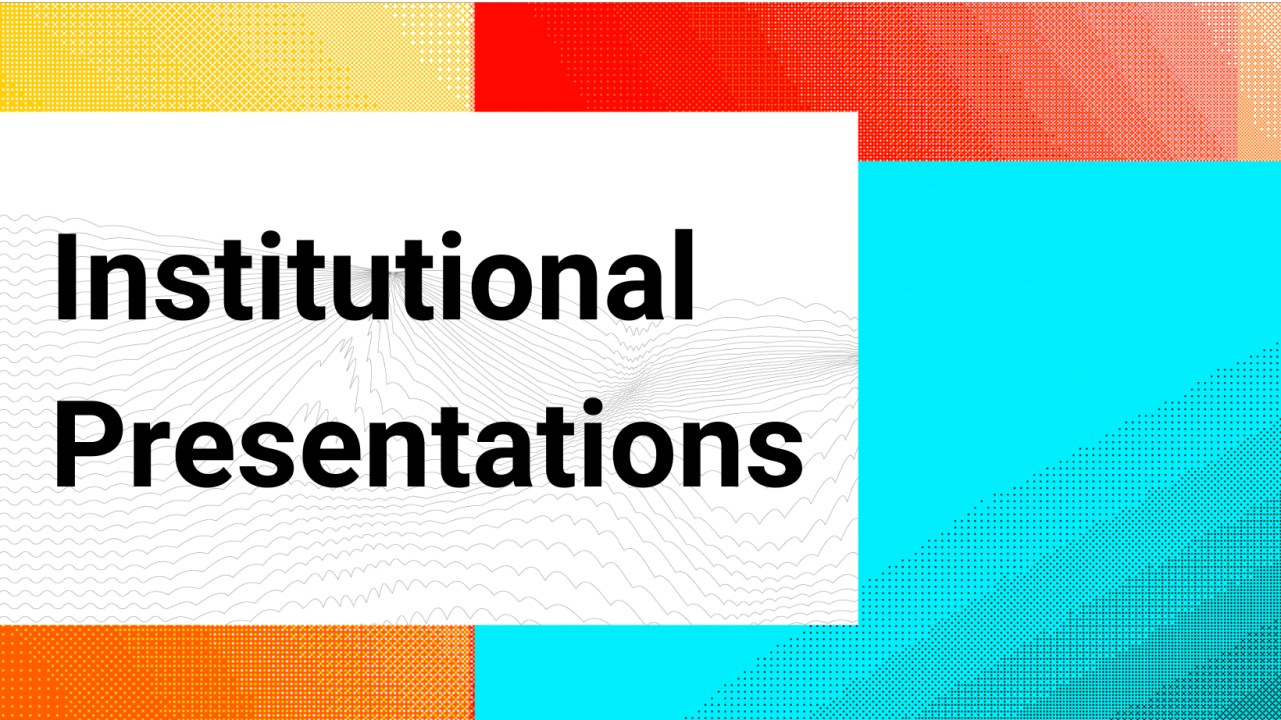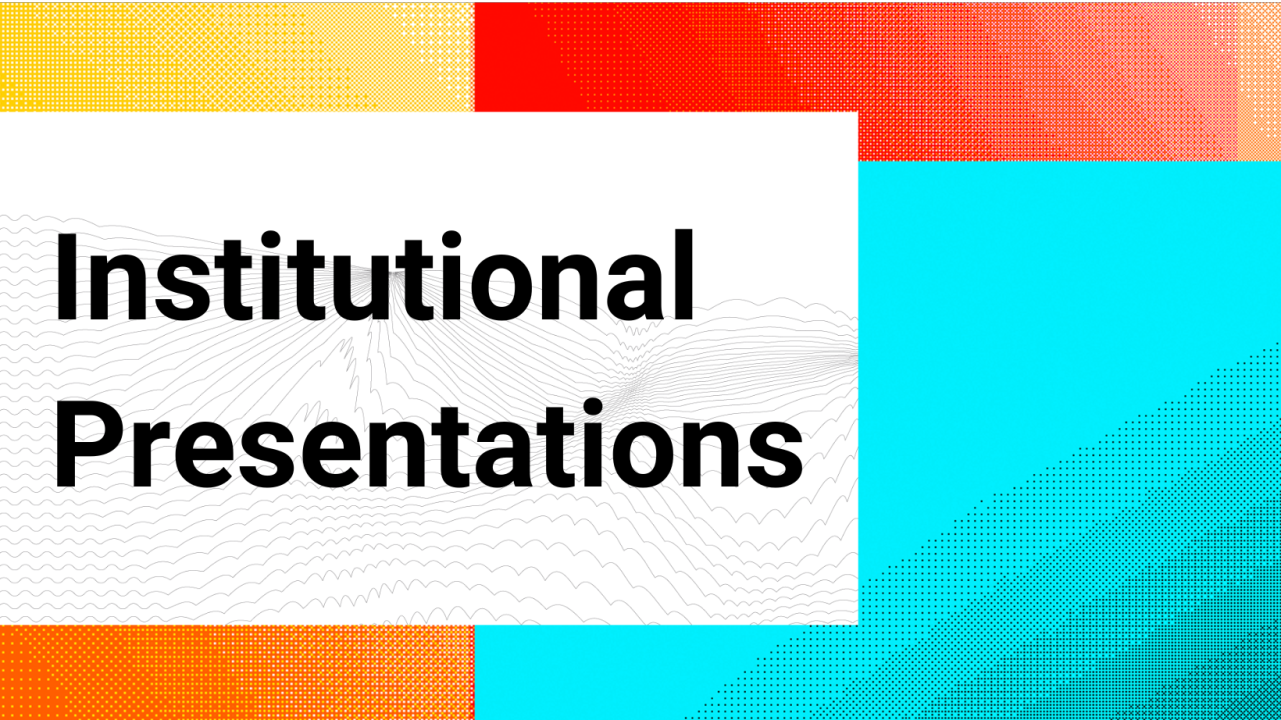

Institutional Presentations
Information
1 - Balance-Unbalance (CAN): Ecology + ArtScience in a time of needed Symbiosis / Ricardo Dal Farra (Concordia University)
The frequency and severity of certain weather and climate-related events around us are increasing, and the ability of human beings to modify our adjacent surroundings has turned into a power capable of altering the planet. How can the media/electronic/emergent arts play a relevant role in changing the escalating ecological crisis?
2 - European Media Art Platform EXPANDED (EU) / By Peter Zorn
EMAP manager Peter Zorn from the werkleitz Centre for Media Art in Halle will introduce the European Media Art Platform EXPANDED and its conditions for media artists and institutions interested in a partnership and briefly present some commissioned artworks from the former programme EMAP 2018-21.
Peter Zorn works as producer, media researcher and media art curator and expert in Werkleitz and Halle (Saale). In 1993 he founded the Werkleitz Association, the Centre for Media Art Saxony-Anhalt, Germany. In 1995 he initi-ated and since then manages the European Artists in Resi-dence Exchange (EMARE) which has expanded and is hosted since 2018 by the European Media Art Platform (EMAP), managed several EU funded projects and pro-grams, is co-director of the Werkleitz Biennale / Werkleitz Festival and since 2011 director of Werkleitz award win-ning Professional Media Master Class.
3 - Hac Te, Barcelona’s new Hub of Arts, Science and Technology (EU, S) / Adriana Valero
4 - The Millennium Film Workshop (US, NY) / Paul Echeverria
The Millennium Film Workshop is based in New York City, NY and is one of the longest running artist-run workshops for experimental cinema and media. The non-profit organization was invented, named, and founded in 1966 by filmmaker Ken Jacobs. Millennium was conceived as a community-based organization dedicated to providing open screenings, low-cost equipment rental, and training programs. These aspects flourished under the leadership of long-time Executive Director, Howard Guttenplan. This level of creative engagement made the Workshop a valuable resource for film and media artists across multiple generations.
In 2014, the Millennium archive was acquired by MoMA. However, by 2015, the Workshop had experienced multiple set-backs. It no longer contained a physical location. In addition, membership and community interest had dwindled. All of the remaining resources were maintained in a dusty storage facility in Brooklyn, NY. In a year when the organization would have been celebrating 50 years of ongoing operations, Millennium was on the brink of extinction.
With the arrival of a new board of directors, Millennium explored multiple steps for reinventing itself. This process included a recommitment to creative programing and educational instruction. In addition, Millennium participated in outreach efforts with film festivals, community organizations, and artists. These symbiotic actions allowed Millennium to move forward as an organization. The following presentation will highlight the creation of Millennium’s digital archive. It will also provide an overview about current programming efforts and the organizational vision for the next 50 years of operation.
5 - Oulu University of Applied Sciences (EU, FI): Minimum Viable Performance: a model for agile experimentation with arts and emerging technologies / Blair Stevenson
6 - SETI Institute (US, CAL): Are we alone? How trans-disciplinary practice helps us to conceive of Life beyond Earth / Bettina Forget, Regine Basha
The existential question “Are we alone in the universe?” has been pondered by scientists and artists alike. The SETI Institute’s Artist in Residence program’s mandate is to reflect on what the discovery of life (and intelligent life) would mean for humanity. Our artists offer fresh perspectives that spark new insights and ideas on scientific research.
Bettina Forget directs the SETI Institute’s Artist-in-Residence program and is a doctoral candidate in Art Education at Concordia University, Canada. Her research examines the recontextualization of art and science, and how transdisciplinarity may disrupt gender stereotypes. Her creative practice focuses on astrobiology, sci-fi, and feminism.
7 - EDF (EU, FR): Up Data Solar / Guillaume Foissac, Cyrille Thouvenin, Etienne Mallo, Clara Jouault, Louis Charron, Shin Kim Hyung, Janes Zabukovec
Up Data Solar is a self-sufficient server designed to extend the lifespan of solar panels, electric vehicle batteries and electronic chips. These components are recycled today when they could still be functional for many years. Entirely produced from upcycled components, Up Data Solar can host a website, store data locally or power a relay antenna (https://www.edf.fr/pulse/design)
8 - Hexagram Network 2020-2027 (CAN) / Sofian Audry, Manuelle Freire
In its current programming cycle (2020-2027) Hexagram Network is invested in understanding and promoting more interdisciplinary, inclusive and diverse models of research-creation. The Network seeks to develop knowledge-sharing and mediation tools and strategies for broader reach, and more effective dissemination and valorization of the research outcomes and artistic productions that emerge from our communities of practice.
Manuelle Freire (MA, PhD) is general coordinator of Hexagram network, Professeure associée UQAM and lecturer at Concordia University. She is an experienced in programming and production in the Cultural and Creative Industries and Academia in the disciplines of Digital and New Media Arts, Design, Higher Education and Research.
Sofian Audry is an artist, researcher, and professor in interactive media at École des Medias of Université du Québec à Montréal (UQÀM). His work is inspired by visual art, artificial intelligence, artificial life, biology and cognitive sciences. His computational works are deployed through multiple media such as robotics, interactive installations, immersive environments, interventions in public space, web art and electronic literature.
9 - French national network TRAS - Transversal Arts Sciences Networks (EU, FRA) / Nathalie Bargetzi
(FR) Présentation de la Transversale des Réseaux Arts Sciences
Constitué en association depuis novembre 2017, le réseau TRAS (Transversale des Réseaux Arts Sciences) est composé de 22 structures artistiques, culturelles, universitaires et de recherche. Elles avancent en commun la nécessité de construire une approche citoyenne de la relation entre arts et sciences, dans une articulation entre nos lieux de vie – le local – et nos implications planétaires, globales.
Nathalie Bargetzi - Responsable pendant quinze ans d'un pôle dédié à l'éducation aux images et cultures numériques en médiathèque, j'intègre la Transversale des Réseaux Arts Sciences en novembre 2021. J'assure la coordination du réseau et des projets.
10 - Terminal - Existence, conservation, and dissemination of Computational Ar / López-Iniesta, Juan Alonso, Battaner Moro, Elena
Terminal is an expansive architecture conceived and designed for the existence, conservation, and dissemination of Contemporary digital art and culture. Born at the intersection between art, science, technology, and research, it is formed by three pillars (practical, theoretical and experimental): TetraArt (a system specially designed for the conservation, preservation, archiving, dissemination, and art market of digital art objects); ODA (the theoretical system that defines and describes what is meant by an Auratic Digital Object); and RECC (the collaborative system of communication and creation of contemporary art and culture in first generation). It is currently formed by researchers, artists, or engineers belonging to different artistic and research institutions/contexts in Spain. We are also exploring and looking for new partnerships at the Euro-pean/International level.
Juan Alonso López Iniesta holds a degree and is PhD with International Mention in Fine Arts from the University of Castilla La-Mancha (Spain). He is currently a lecturer in the Faculty of Arts and Humanities at the Universidad Rey Juan Carlos. His lines of research are Interactive Design (user experience (UX), Graphic Communication (architectural graphic expression, editorial design), Technologies for Graphic Communication, and Theory and Aesthetics of the Arts, Computational Art and Cybernetics. He has participated in different projects and has numerous publications in the aforementioned areas.
11 - Working with Artists as Part of Our Team: Surrey Art Gallery’s Commitment to the Production and Presentation of Digital and Interactive Art / Alison Rajah